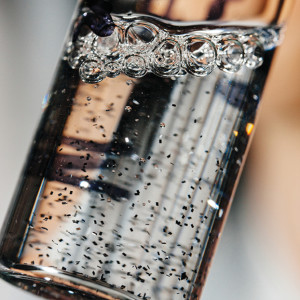PARC’s technique of mincing chips into printer ink could revolutionize the way electronics are made.
 Typically, chips are made in bulk on semiconductor wafers and then cut into individual units and placed on motherboards inside computers and other devices. But researchers at PARC, in Palo Alto, California, envision doing something different with the wafers: chopping them up into hairs-width “chiplets,” mixing them into an ink, and guiding the tiny pieces electrostatically to just the right spot and orientation on a substrate, from which a roller could pick them up and print them.
Typically, chips are made in bulk on semiconductor wafers and then cut into individual units and placed on motherboards inside computers and other devices. But researchers at PARC, in Palo Alto, California, envision doing something different with the wafers: chopping them up into hairs-width “chiplets,” mixing them into an ink, and guiding the tiny pieces electrostatically to just the right spot and orientation on a substrate, from which a roller could pick them up and print them.
Because printers can deposit materials on different substrates, this technology could be used to make high-performance flexible electronic devices, tiny sensors festooned with dense arrays of diverse sensors, or 3-D objects with computing functions woven in, says Janos Veres, who manages PARC’s printed-electronics team. And the approach could make it easier for more people and small companies to design and manufacture custom computing devices.
The technology marshals chiplets into place using software-controlled electrical fields generated by arrays of wires beneath an assembly substrate. Like balls rolling into divots, the chiplets go to locations defined by the electrical fields.
The first hurdle is figuring out how to precisely assemble chiplets; so far, PARC has managed to place four at a time and then wire them together in a second step. Still, that achievement is a start toward “accelerating the evolution of microelectronics,” Veres says. “We can iterate new circuits every minute, opening up thousands of uses.”
See the full story here: http://www.technologyreview.com/photoessay/529761/micro-chiplets/?utm_campaign=newsletters&utm_source=newsletter-daily-all&utm_medium=email&utm_content=20140808
Pages
- About Philip Lelyveld
- Mark and Addie Lelyveld Biographies
- Presentations and articles
- Tufts Alumni Bio